If Paris is the City of Lights, North Korea is the country without lights.
For nine years I lived in Seoul just below it, and the past two years I’ve been in Busan, on the SE coast in South Korea. I am always asked about North Korea when I explain where I live, and to me, this map explains a lot. Take it in. I will let the image speak for itself.
Two good non-fiction books I would recommend for a glimpse would be Aquariums of Pyongyang by Kang Chol-Hwan and Pierre Rigoulout, Barbara Demick’s Nothing to Envy, as well as fictional Your Republic is Calling You by Young Ha Kim. Aquariums is the standard book to get into the topic. Your Republic captures the imagination of possible dynamics, following the would-be life of a spy from the North living in Seoul, but if you were to choose just one, read Demick. She was a reporter from the LA Times who lived on the peninsula for ten years, given the charge of covering the two Koreas. At first she was stationed in Pyongyang, but found she wasn’t able to gleen much about the inner-workings of society. Later in Seoul, she extensively researched and put together the stories of six residents of Chongin, North Korea’s third biggest city, and weaves together the story of their lives.
If you want to go deeper, check out Rescue North Korea, who work on moving refugees out through China and Mongolia or SE Asia and help them settle in the south: http://www.libertyinnorthkorea.org/rescue-refugees/
Where am I, and what am I doing here? I am a traveler who set up camp here in Asia. I am one of many. Here is my current city, Busan, city of 3.5 million:
Busan, according to the City Tourist Association: 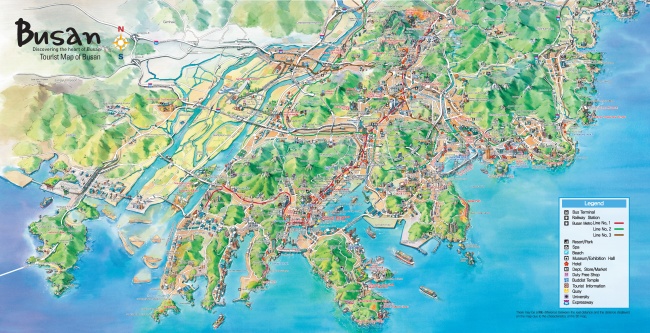
Busan, as Marines see it (I’d really like an over-the-shoulder explanation of this one.):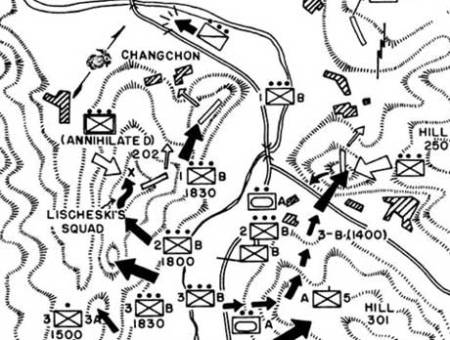 As
As
Busan as it was seen in 1872 (I like to remember there were tigers living here then):
Busan as I see it:
So as you know, travel is more than observing. Travel is making footprints and meeting people. If you step up to Dalmaji Hill in Busan, overlooking Haeundae beach, this is what you see:
David Spurr, The Rhetoric of Empire: Colonial Discourse in Journalism, Travel Writing, and Imperial Administration, in which he says “any visual artist knows, the gaze is also the active instrument of construction, order, and arrangement. What one might call the ideology of the gaze takes on one of its clearest forms in the convention of the commanding view(15)”. Spurr tells us that, an aerial view, the power to construct an image, is the power to create a reality. Here, I am giving you versions of this aerial view. So what is this place? At this point, am I an observer anymore? Or part of the landscape, part of the observed? South Korea is a relatively homogenous society, so I am a visible minority, and any expat living here has a lofty collection of moments when we have been pointed out. Literally. Who wants to be like everyone else? Whether or not we want to be like them, it may be nice to be with them.
In Imperial Eyes: Travel Writing and Transculturation Mary Louise Pratt describes the contact zone, a bridging point of understanding between two cultures, or the observer and the observed. For me, to access this zone, I have to be grounded in the present moment. I recognize the different cultures or perspectives, and focus my awareness on our commonality. Oh, it is a messy process. I am tested sometimes, and sometimes I fail. Often. I become humbler in the process usually. The contact zone comes with sharing a meal together, with a mutual life pattern such as work, or play, and sometimes, in a moment.
Since my arrival in Korea, the expanse and intricacy of my connections to people has been growing non-stop. I would like to relate one of the first, synchronous meetings I had, when I was flushed into the contact zone in a magical way. Before my move to Korea, I had a brief interlude of employment at an ESL school in Canada, Vancouver. On my first weekend in the megalopolis of Seoul, I was ventured into the downtown area. Walking in awed stupor at the immensity of the population and intensity of the urban activity around me, I heard a voice:
“Hey, I know you.”
The voice was talking to me. By chance, I bumped into An Young Won, to whom I had given a class a few times in Vancouver. I felt like a trapeze artist, caught on the other side of the abyss. “I know you.”
At times, life abroad, or life anywhere can be lonely. But loneliness is a temporary affair, a good driving force for reflection, and at any rate, sweetens the arrival of friends.
Here I am with An, when I visited him years later in Beijing, where he moved to do his MBA at Peking University:
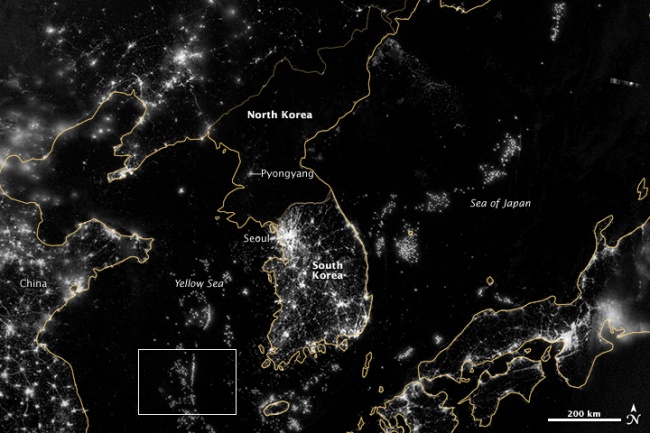
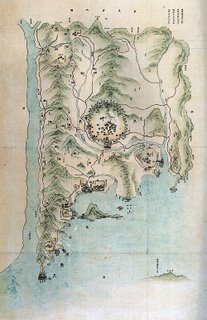
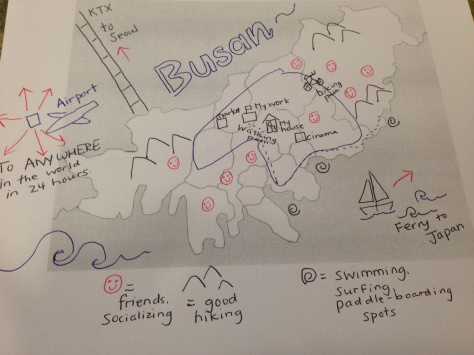
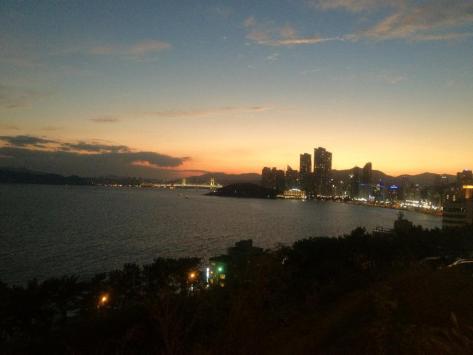
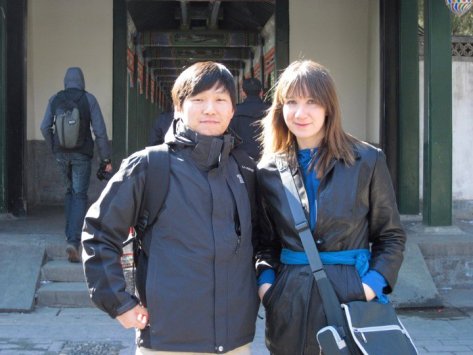
Rhea,
Wow that picture of lights is incredible! Along with the other maps, it really makes Spurr’s words come to life. Perhaps in your situation you are both observer and observed. As a non-native it’s inevitable to get those stares, certainly as a long-time resident you have become part of the landscape to a complete outsider. As you show in your very own map of the area, you have made the place your own in a way. Your Busan. In Hawaii, no matter how long I live here I will never be considered a “local” because it simply has different connotations.
How do you feel being an outsider in your own city? Besides the occasional stares, does it feel like home?
I would love to hear a story of a time where you were so involved in your experience that you forgot you were in a “contact zone.”
Thanks for sharing your perspective and your very own map!
Jamie
Thanks for the constructive advice, Jamie. I think you are my peer advisor, right? I’ll think about how to rework it with more narrative. 🙂
Yes ma’am I am 🙂
Rhea,
I LOVE how you’ve incorporated different maps here; it illustrates (sorry!) the point beautifully, and it really demonstrates how visual conceptualization affects cartography, and understanding the land. Isn’t it interesting how individual construction affects our understanding of a land, and vice versa? Thanks for this!
–M.
Actually, Michelle, I got the idea from you. 🙂
I was inspired by your clever map of medieval Scandinavia, complete with creatures swimming in the water. It sparked my idea for these contrasting maps. So, thanks to you.
Rhea